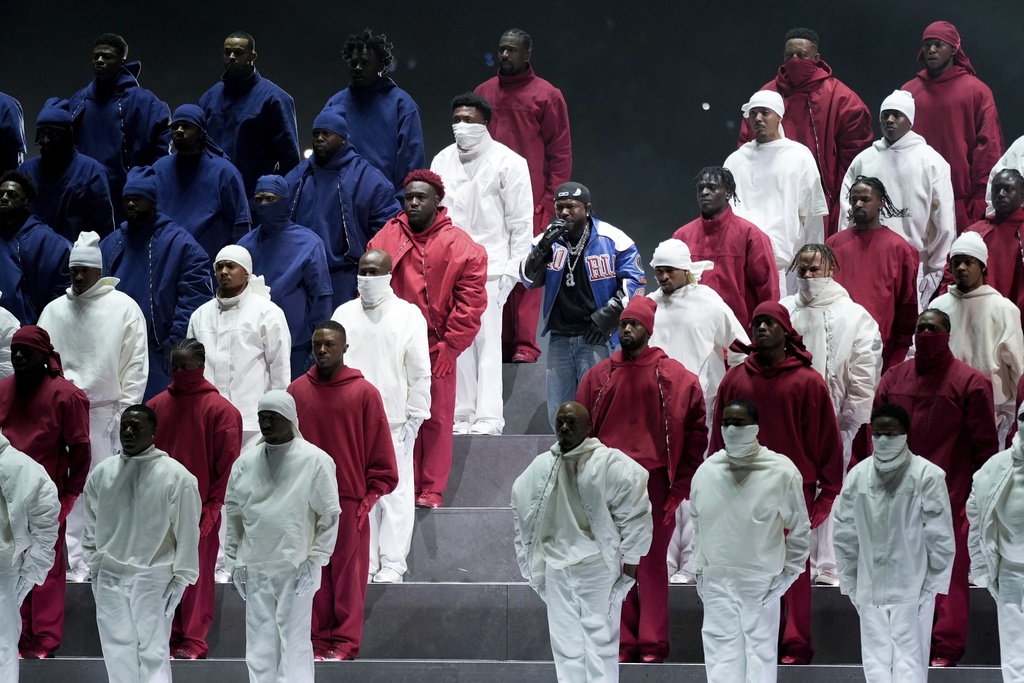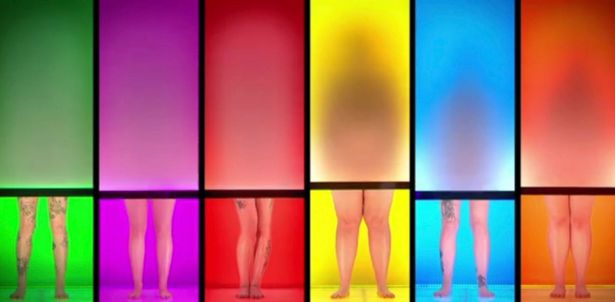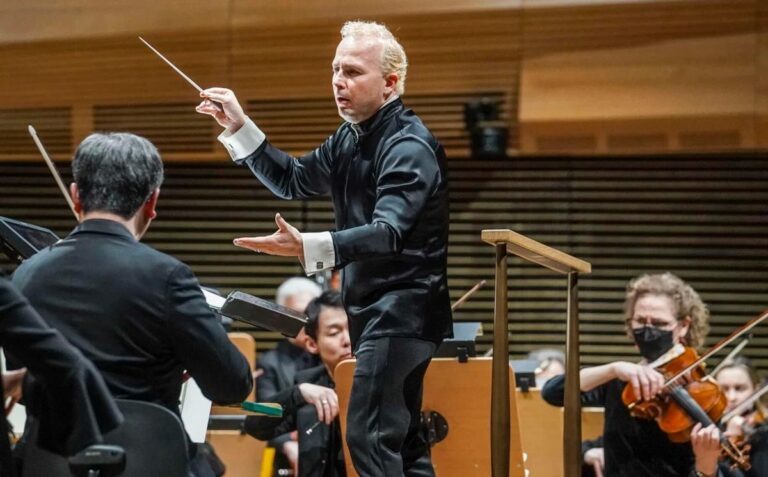
A record-breaking 133.5 million viewers tuned in to watch Kendrick Lamar take the stage at one of the most sought-after gigs in music — the Super Bowl halftime show. Aside from the celebrity cameos and adding another chapter to his long-time feud with Drake, Lamar’s halftime show was designed to make a political statement. According to the performance’s art director, Kelly Rodgers, Lamar envisioned his show depicting “his journey, traveling through the American dream.” In other words, it was a game of life conveyed to the viewer with help from references to the PlayStation controller.
Actor Samuel L. Jackson, portraying the classic red-white-and-blue-clad Uncle Sam, introduced “the great American game” before cameras focused on Lamar crouched on a 1987 Buick GNX. He began his set wearing bell bottoms reminiscent of the “counterculture and anti-war” movements of the 1960s, when bell bottoms stood for rejecting gender norms, the military, and the previous generation’s preference for a refined wardrobe.
Lamar then uttered a phrase that explicitly indicated his intention with his performance: “The revolution ‘bout to be televised. You picked the right time but the wrong guy.”
Uncle Sam played an important role in the performance, criticizing Lamar for being “too loud, too reckless, too ghetto” and telling him to “tighten up,” effectively pressuring him to fall in line. After the next song, Uncle Sam delivers on his threat, telling the “scorekeeper” to “deduct one life,” alluding to the game being rigged against Lamar for failing to do so. It wasn’t until he performed “All the Stars,” one of his more pop-y and mainstream tracks, that Uncle Sam approved and complimented the calmness of the song.
Lamar alluded to mass incarceration, performing on a stage designed to resemble a prison yard, the division of the U.S., splitting the flag made up of his backup dancers down the middle, and referenced the “40 acres and a mule” (broken) promise made to Black Americans after the abolition of slavery.
Like seemingly every aspect of politics, the performance was rather polarizing. For some, the performance was “satanic,” and for others, it was a potent portrayal of life through the lens of a Black American. But for many, it was the worst halftime show in recent memory.
Following the 2024 election, New York Times writer Bret Stephens wrote a piece characterizing the left as a “party of prigs and pontificators” — out-of-touch, condescending politicians who label anyone not bowing down to them a bigot, alienating possible voters in the process. Stephens believes this approach lost Kamala Harris the election, and it is the same attitude that we now see in the aftermath of Kendrick Lamar’s performance.
Take, for example, the TV program “The View,” where co-host Ana Navarro praised the performance and scoffed at the negative reviews she saw on her social media feed, labeling the users as “racists.” Of course, there are plenty of critics, the Ben Shapiros and Matt Gaetzs of the world, who are motivated by the wrong reasons, however, this is not representative of the entire public. Skeptics of Trump have also claimed that Lamar’s message caused the president to leave the game early without any real evidence. The more likely reason was the score (the Eagles led the Chiefs 24-0), and Trump has not since commented on the performance. Blindly claiming victory and labeling all objectors racists completely ignores the logical basis behind the criticism.
The more glaring issues in the show had more to do with entertainment value than anything due to Lamar’s desire to make a political statement. Creating a concrete prison yard falls far short of the eye-catching visuals fans are accustomed to seeing. On top of that, much of the setlist featured newer songs in favor of some of the rapper’s most well-known tracks. Fans used to watching for pure entertainment were bound to be disappointed with a show largely concerned with other factors. The N.F.L. even expressed regret over the performance, sending an apology letter to the second-choice performer, New Orleans native Lil Wayne.
This is not a criticism of Lamar or his decision to use his platform for something he believes in. However, the expectation that the message would resonate enough to overshadow the shortcomings in entertainment value is unrealistic, regardless of your view on the show itself.
Attributing all criticism to bigotry is a divisive tactic that lacks any basis and doing so would mean repeating the same mistakes that landed us in our current state of politics. The name-calling and “pontificating” of the 2024 election worked against Democrats and only led to contention. It’s time for a new approach, and the halftime show is as good a place as any to start.
The Zeitgeist aims to publish ideas worth discussing. The views presented are solely those of the writer and do not necessarily reflect the views of the editorial board.


